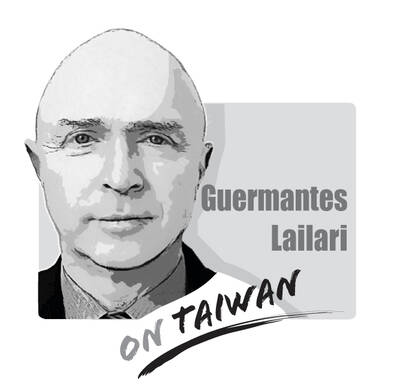On Oct. 17, the National Development Council released its latest population projections. The predictions, while expected, are not good.
The nation’s population is projected to continue to decline, moving Taiwan into a “super-aged” society next year.
In 1970, the population was 14.7 million, compared with more than 23 million today. By 2060, this figure is projected to fall to 17.4 million.
Population decline is a serious problem that has been long in the making and has long-term implications. These will arise even if the government can turn the ship around at this late juncture, which does not seem to be happening.
The nuances of the problem can be seen not in population figures or even the dependency ratio — expressed as the number of dependents per 100 people in the working population — but at the interplay of the child dependency ratio — referring to the non-working age group of 0-15 — and the old-age dependency ratio — the non-working age group of those aged 65 or older — because of the stresses they place on the system and the challenges solutions entail.
The overall dependency ratio was 74.2 in 1970. It is projected to be 46.3 next year and 102.2 in 2060.
That is, it has been declining, but is set to increase in the next few decades.
A distinction must be drawn between the two dependency ratios. In 1970, the child dependency ratio was 69.08, compared with 5.08 for old-age dependency, ie, there were proportionally more children and fewer elderly people.
The projection for 2060 reverses that: The child dependency ratio is to plummet to 14.94, while the old-age dependency ratio is to jump to 87.28.
These figures do not exist in isolation, neither is the population the salient point. Rather, they tell a story of massive and long-term social transformation that will need to be addressed.
The transformation will require services and institutions to find solutions to evolving needs as they provide an emphasis on childcare and schools, more resources for long-term and palliative care, implement radical changes in priorities in healthcare provision and hospital training, as well as ways to mitigate increased strain on the National Health Insurance system.
Yet another element is regional differences. Ministry of the Interior data on local demographics show differences in the proportion of the elderly people by region: The 65-or-older age group is greater than 20 percent in Taipei and Keelung, as well as Chiayi, Nantou, Yunlin, Pingtung and Hualien counties, making them officially “super-aged,” while the ratios in Hsinchu County, Hsinchu City, Lienchiang County and Taoyuan were only 14.25 percent, 15.06 percent, 15.4 percent and 15.48 percent respectively.
Historically, it seems that governments in Asia have had considerable more success in discouraging couples to have children than encouraging parenthood: China has ended its one-child policy, but Chinese couples have not responded to state efforts to encourage them to procreate. In post-World War II Japan, Tokyo promoted contraception and decriminalized abortion to curb population growth, but encouraging childbirth is a more challenging proposition. In the 1970s, South Korea legalized abortion, but is now struggling to address one of the lowest birthrates in the world.
Promoting childbirth is also an uphill struggle in Taiwan. The problem is that demographic changes are measured in decades, not years, and the nation is in the middle of a switch of the two dependency rates — nationally and regionally. The government must address the social challenges of this demographic transformation, not merely the fertility rate.

There is much evidence that the Chinese Communist Party (CCP) is sending soldiers from the People’s Liberation Army (PLA) to support Russia’s invasion of Ukraine — and is learning lessons for a future war against Taiwan. Until now, the CCP has claimed that they have not sent PLA personnel to support Russian aggression. On 18 April, Ukrainian President Volodymyr Zelinskiy announced that the CCP is supplying war supplies such as gunpowder, artillery, and weapons subcomponents to Russia. When Zelinskiy announced on 9 April that the Ukrainian Army had captured two Chinese nationals fighting with Russians on the front line with details
On a quiet lane in Taipei’s central Daan District (大安), an otherwise unremarkable high-rise is marked by a police guard and a tawdry A4 printout from the Ministry of Foreign Affairs indicating an “embassy area.” Keen observers would see the emblem of the Holy See, one of Taiwan’s 12 so-called “diplomatic allies.” Unlike Taipei’s other embassies and quasi-consulates, no national flag flies there, nor is there a plaque indicating what country’s embassy this is. Visitors hoping to sign a condolence book for the late Pope Francis would instead have to visit the Italian Trade Office, adjacent to Taipei 101. The death of
The Chinese Nationalist Party (KMT), joined by the Taiwan People’s Party (TPP), held a protest on Saturday on Ketagalan Boulevard in Taipei. They were essentially standing for the Chinese Communist Party (CCP), which is anxious about the mass recall campaign against KMT legislators. President William Lai (賴清德) said that if the opposition parties truly wanted to fight dictatorship, they should do so in Tiananmen Square — and at the very least, refrain from groveling to Chinese officials during their visits to China, alluding to meetings between KMT members and Chinese authorities. Now that China has been defined as a foreign hostile force,
On April 19, former president Chen Shui-bian (陳水扁) gave a public speech, his first in about 17 years. During the address at the Ketagalan Institute in Taipei, Chen’s words were vague and his tone was sour. He said that democracy should not be used as an echo chamber for a single politician, that people must be tolerant of other views, that the president should not act as a dictator and that the judiciary should not get involved in politics. He then went on to say that others with different opinions should not be criticized as “XX fellow travelers,” in reference to